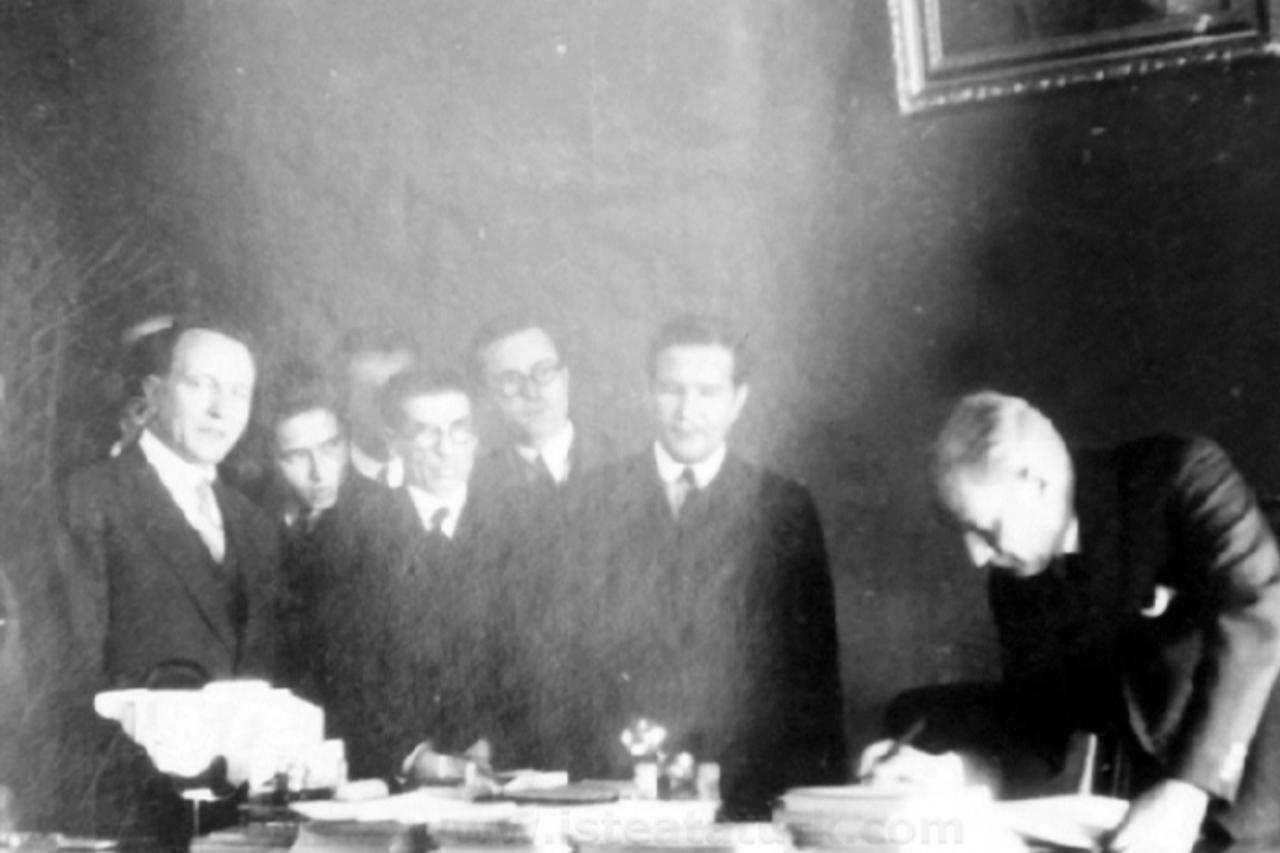
Imagine walking into Istanbul University’s chemistry lab in the mid-1930s. A faint whiff of acetone drifts in the air, rows of glass flasks and metal stands gleam faintly, and lab coat sleeves bear the marks of countless experiments.
Here, amid modest rooms and flickering gas lamps, the young Republic of Türkiye pursued its founder’s vision: to cultivate modern scientific institutions that would support national progress.
The 1933 University Reform had closed Darulfunun (Istanbul University), dismissed much of the old staff, and welcomed Turkish scholars returning from Europe, alongside German emigre scientists fleeing the political upheavals of the Nazi regime.
The reform was bold, symbolic, and national: Türkiye would not merely import science—it would produce it.
Yet in the corners of chemistry wings, botanical greenhouses, and physics institutes, experiments began that would never see full publication. Protocols were left in drawers; data quietly vanished.
Remziye Hisar, Türkiye’s first woman chemist, meticulously recorded reaction temperatures, pH shifts in Turkish herb extracts, and margin notes: “unexpected precipitate.” Alongside her, figures like Ali Rıza Atamer and Celal Yardimci were pioneering physics and chemistry projects.
While their publications survive, many notebooks—first-hand measurements, experiment sketches, and observations—were lost amid the upheavals of the 1930s and 1940s.

The losses are painfully concrete. On Feb. 28, 1942, a fire swept through the Zeynep Hanim Mansion in Vezneciler, which housed Istanbul University’s Faculty of Science. Archives report: “All equipment and instruments were destroyed by fire … research and teaching activities were interrupted.”
Bunsen burners, glass pipettes, unpublished chemistry projects—all disappeared. Language shifts, cataloging changes, and institutional restructuring compounded the loss. The gaps in the 1940s literature are not signs of neglect but evidence of how fragile the scientific infrastructure was in early Republican Türkiye.
Consider a lab note from those years: “Extract B, ratio 1:10, room temperature, 45 mins, precipitate forms; color pale cream. Need further repetition once the filter lamp is replaced.”
The lamp burns out, the lab relocates, and the page disappears. Later, students searching for “Experiment 34” find only an empty folder and an administrative memo: “delay due to equipment shortage.” This is not anecdotal; it shows the delicate structure of knowledge, dependent on repetition, documentation, and institutional memory.
A botanical greenhouse built in 1936 under foreign funding also fell victim to the 1942 fire. Experiments in plant biology, genetics, and meteorology vanished. Archive sheets note: “Building lost to fire, see catalog number 0–374; instruments not recovered.”
Observations of rye versus barley growth under Anatolian climate conditions were erased before publication. These losses are both physical and temporal, leaving gaps in Türkiye’s scientific memory.

Science is a web of experiments, replications, and shared methods. When records vanish, historical continuity fractures, and national memory is impoverished.
The early republic’s ambition collided with resource scarcity, war economies, and archival neglect. Missing chapters in the narrative of scientific progress echo decades later, reminding us that modernization was both courageous and fragile.
Some argue, “Science moved on anyway.” Indeed, new laboratories, faculties, and equipment were established. Yet the early years offered momentum. When records and notebooks were lost, cumulative knowledge suffered.
A 1950s Ankara chemistry professor recalled in an oral history interview, “Our work in 1954 had to begin like starting over; there was little documentation from 1938 projects.” Reconstruction was not merely physical—it was documentary.
The human stories behind these records are inseparable from scientific history. Dr. Hisar confronted dual challenges: breaking barriers as a pioneering woman chemist and navigating the loss of her notebooks. Ali Riza Atamer, conducting physical chemistry experiments, faced the same fragility.
Celal Yardimci’s early nuclear physics notes disappeared amid building relocations. Their surviving articles offer only a partial view. The missing records illuminate the broader narrative of early Republican science: uneven, underdocumented, and partially erased.
The old Faculty of Science building still bears a plaque: “Faculty of Science, established 1933, building opened 1952 after fire of 1942.” It commemorates both renewal and loss. Fires, missing German lab manuals, and disused index cards speak to the fragile promise of modernization.
Science policy extends beyond bricks and mortar; it encompasses archives, mentorship, and continuity. When these vanish, the cumulative power of knowledge diminishes.
Modern Türkiye now builds mega research institutes, technology hubs, and global academic partnerships. Yet each lab rests on a lineage of trials, errors, and breakthroughs.
Some links survive; others were lost to fire or bureaucratic disruption. Published results are only part of the story; quiet notebooks, unfinished experiments, and forgotten logbooks are equally vital.

Modernity is an archive of both triumphs and what was never recorded. Türkiye’s scientific dawn shone brightly, yet many notebooks remained closed. Perhaps, in a dusty Istanbul storage shelf, lies a 1937 notebook with chemical sketches, gradient tables, and a student’s smudged note: “Repeat tomorrow with 10% extract.” Knock gently, and the soft pulse of long-cooled Bunsen flames seems to echo.
The republic’s early laboratories were zones of transition—from Empire to modern state, from imported protocols to Turkish agency, and from experiment to publication.
Their uncharted margins—what was never published or cited—deserve remembrance as much as the speeches of Türkiye's founder Mustafa Kemal Ataturk and state builders. Knowledge is fragile, and preservation is essential.
As Türkiye celebrates the 102nd anniversary of the republic today, we honor more than a date.
We celebrate curiosity, perseverance, and a commitment to knowledge. The lost experiments of the 1930s and 1940s are echoes of what could have been and a testament to resilience.
Just as pioneering scientists persisted through fires, missing records, and political upheaval, so too does the republic stand strong after more than a century.
This anniversary reminds us to preserve the lessons of these silent laboratories and continue fostering a future where science, education, and innovation thrive for all.